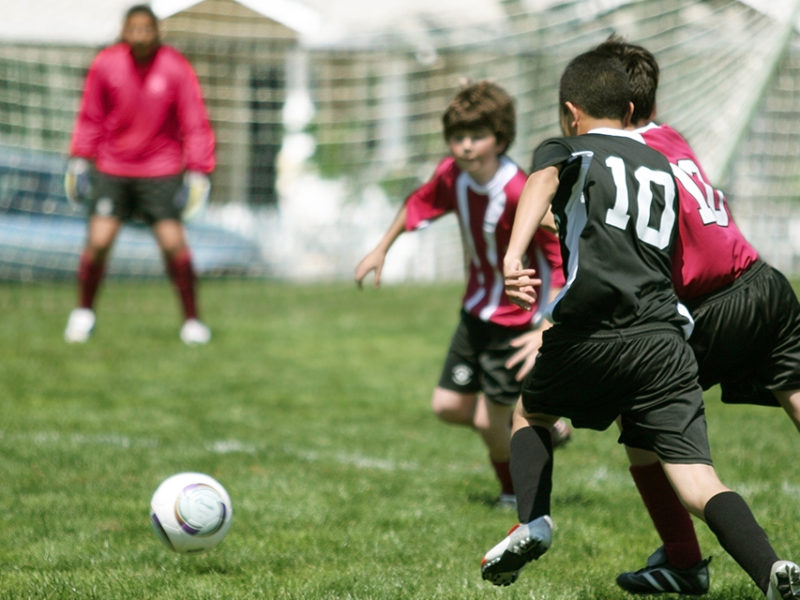Physical Activity Intervention May Benefit Adolescents With Congenital Heart Defects
Physical Activity Intervention May Benefit Adolescents With Congenital Heart Defects https://pediatricsnationwide.org/wp-content/uploads/2020/11/AdobeStock_106030267-1024x684.jpg 1024 684 Mary Bates, PhD Mary Bates, PhD https://secure.gravatar.com/avatar/c6233ca2b7754ab7c4c820e14eb518c8?s=96&d=mm&r=g- February 24, 2022
- Mary Bates, PhD

A lifestyle intervention delivered via videoconference increased physical activity in the least active participants.
In a new pilot study, researchers from Nationwide Children’s evaluated the efficacy of the Congenital Heart Disease Physical Activity Lifestyle (CHD-PAL) intervention for high school-aged adolescents with congenital heart defects. The results demonstrate the intervention is feasible and acceptable, and preliminary evidence suggests it may help those who are least physically active increase their activity.
As individuals with congenital heart defects age from adolescence into adulthood, they are at increased risk for developing additional cardiovascular complications. Although these can be mitigated by increasing physical activity, adolescents with congenital heart defects often do not meet recommended activity levels.
Interventions to increase physical activity levels among individuals with congenital heart defects typically involve structured programs that resemble cardiac rehabilitation. However, people often have trouble maintaining long-term changes in physical activity outside of these structured settings.
“Health interventions are often not grounded in any theory about how we can change not just behaviors, but how people think about those behaviors,” says Jamie Jackson, PhD, a principal investigator in the Center for Behavioral Health at the Abigail Wexner Research Institute and The Heart Center at Nationwide Children’s and lead author of the new study.
The CHD-PAL intervention was designed to promote lifestyle changes in physical activity by targeting components of the Theory of Planned Behavior, a health behavior change theory. Dr. Jackson and her colleagues incorporated three primary elements of the theory that may contribute to behavior engagement: 1) people’s attitudes towards physical activity, 2) people’s feelings of control over engaging in physical activity, and 3) the social norms they perceive around being physically active.
The researchers recruited 60 high school-age adolescents with congenital heart defects. Half of them were assigned to receive the CHD-PAL intervention (eight 30-minute videoconferencing sessions with a health care coach over 20 weeks, plus an exercise prescription based on a baseline exercise stress test and an activity tracker to keep track of progress) or a comparison group who just received the exercise prescription and activity tracker.
“We found that, overall, the intervention did not have an effect,” says Dr. Jackson. “However, when we looked at individuals who were lowest in physical activity at baseline — those getting less than 21 minutes per day, on average, of moderate to vigorous physical activity — we found there was a significant effect of the intervention among this group.”
Dr. Jackson, who is also an assistant professor of pediatrics at The Ohio State University College of Medicine, says these results warrant examination in a larger trial with a longer follow-up period to determine whether the CHD-PAL intervention can promote sustained changes in behavior.
“We now have excellent pilot data, but the next step is to get a larger trial going so we can really establish the efficacy and say with much more confidence that it does work, particularly among those individuals who need it most, and we’re able to sustain that change over a longer period of time.”
Reference:
Jackson JL, Fox KR, Rausch JR, Swenski TN, Neville SP, Marousis NC, Korth CX, Cua CL, Garg V, Vannatta K. A Randomized Clinical Trial Demonstrating Feasibility and Preliminary Efficacy of a Videoconference-Delivered Physical Activity Lifestyle Intervention Among Adolescents With a Congenital Heart Defect. Annals of Behavioral Medicine. 2021 Dec 24:kaab105.
About the author
Mary a freelance science writer and blogger based in Boston. Her favorite topics include biology, psychology, neuroscience, ecology, and animal behavior. She has a BA in Biology-Psychology with a minor in English from Skidmore College in Saratoga Springs, NY, and a PhD from Brown University, where she researched bat echolocation and bullfrog chorusing.
-
Mary Bates, PhDhttps://pediatricsnationwide.org/author/mary-bates-phd/December 27, 2016
-
Mary Bates, PhDhttps://pediatricsnationwide.org/author/mary-bates-phd/
-
Mary Bates, PhDhttps://pediatricsnationwide.org/author/mary-bates-phd/
-
Mary Bates, PhDhttps://pediatricsnationwide.org/author/mary-bates-phd/





